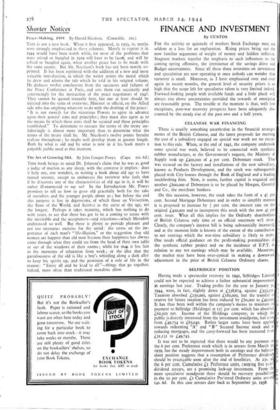Peace-Making, 1919. By Harold Nicolson. (Constable. los.) Tuts is not
a new book. When it first appeared, in 1933, its merits were strongly emphasisedt in these columns. Merely to reprint it in 1944 would have been worth while, for most of the problems that were solved or bungled in 1919 will have to be faced, and will be solved or bungled again, when 'another peace has to be made with the same enemy. But Mr. Nicolson's book has not been merely re- printed. It has been reprinted with the addition of a new and most valuable introduction, in which the writer points the moral which he drew and adorns the tale which he told in his original volume. He deduces twelve conclusions from the successes and failures of the Peace Conference at Paris„and sets them out succinctly and convincingly for the instruction of the peace negotiators of 594?. They cannot be quoted textually here, but one at least should be injected into the veins of everyone, Minister or official, on the Allied side who has anxthing whatever to do with the drafting of the peace: " It is not enough for the victorious Powers to agree in advance upon their genera! aims and principles ; they must also agree as to the means by which these aims shall be secured and these principles established." To determine to execute the terms of the treaty un- falteringly is almost more important than to determine what the terms of the treaty shall be. Mr. Nicolson's twelve points breathe realism throughout ; he might well develop them at greater length. Both by what is old and by what is new in it his book meets a palpable public need at this moment.


























 Previous page
Previous page